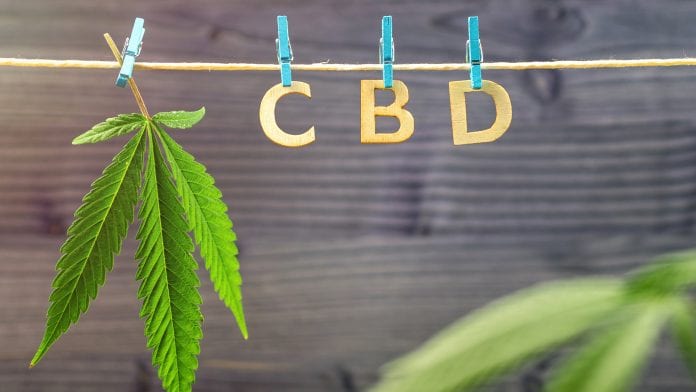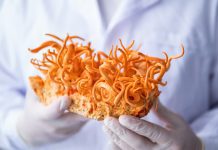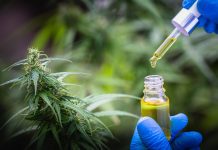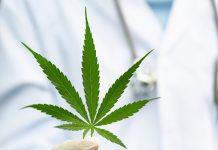
The public curiosity in CBD is rising, and Google can prove it – but how does it actually work with our bodies?
Researchers from the University of California, San Diego, and Johns Hopkins University analysed the search frequency of non-intoxicating CBD. The 2019 study showed search rates grew to 126% from 2016 to 2017, 160% the next year, and 118% the year after that.
The millions of monthly searches shouldn’t be a surprise. All but 17 states have now legalised marijuana in some form, with Illinois being the most recent entry into the club. Industry experts project that states like New Jersey and New York will follow suit in due time.
All this interest merits understanding the mechanisms behind the compound and its effects.
What is CBD?
CBD is the abbreviation for ‘cannabidiol’ and is found in cannabis plants. There are 113 currently known cannabinoids, each playing a role in the endocannabinoid system. Tetrahydrocannabinol (THC) and cannabinol (CBN) are two other well-known types.
It is a non-psychoactive compound, which means that people do not feel ‘high’ after using it. Proponents revere the compound for its wide range of medical benefits, including the treatment of Dravet syndrome and Lennox-Gastaut syndrome. While the Food and Drug Administration (FDA) does not regulate the purity or safety of the substance, CBD is considered safe.
The most efficient way to acquire CBD is through carbon dioxide extraction. The expensive method uses carbon dioxide to separate the oil from the plant matter. The combination of a highly pressurised environment and low temperatures maximises the amount of CBD that is extracted during the process.
As for other methods, extraction uses the entirety of the cannabis plant. Manufacturers can extract the compound from the stem, stalk, leaves, and flowers of a hemp plant. The resulting compound is what goes on to influence the endocannabinoid system with a myriad of benefits.
What is the Endocannabinoid System?
The endocannabinoid system is a complex biological system in the human body. Medical researchers discovered it in the 1990s, but much is still unknown about how it works and its interactions. Today, experts know that it impacts several major processes, including appetite, sleep, mood, and memory, but there is much more yet to be discovered.
The endocannabinoid system has three components: receptors, enzymes, and endocannabinoids. These parts function regardless of whether someone uses CBD or not.
Here is an overview of each component:
Receptors exist throughout the body and are a substance to which endocannabinoids bind;
Enzymes appear in many forms, but only two types of enzymes break down endocannabinoids; and
Endocannabinoids complement the body by keeping internal functions running smoothly.
Understanding the effects of CBD involves examining the relationship between the receptors and endocannabinoids.
There are two types of receptors: CB1 and CB2. CB1 receptors are primarily in the central nervous system and are responsible for governing coordination, movement, pain, appetite, memory, mood, and other functions. The CB2 receptors are in the peripheral nervous system, influencing pain, and inflammation.
After the enzymes break down the cannabinoids, the endocannabinoids look to bind with receptors. Researchers believe that CBD does not directly attach itself to the receptor but influences it in some way. Activating these receptors is what allows for many of the health benefits that people associate with the compound.
CBD can also influence non-cannabinoid receptors. According to Teaera Roland of Lotus Health, CBD modulates the 5ht serotonin receptor, which can treat psychotic disorders. It can also affect the TRPV1 receptor, which is responsible for pain and inflammation.
Effects of CBD
The non-psychoactive properties of CBD make it ideal for therapeutic use. In addition to treating the multiple forms of epilepsy, CBD is also effective for anxiety, stress, depression, and physical ailments. There is no shortage of research to back up these claims, either.
For instance, one study connects CBD with a reduction in heart conditions, such as heart attacks and strokes. Another short-term study found that a dose of the compound reduced the appetite of patients. There have also been multiple researchers that have shown a link between CBD and treatment for PTSD symptoms, like negative memories, anxiety, and nightmares.
CBD plays a significant role when relieving pain, too. When the CBD influences the TRPV1, it is effectively blocking pain signals from reaching the rest of the body. The inference provides solace from aches, swelling, and discomfort.
Where to find CBD
CBD is readily available in all fifty states. While the federal government still classifies it in the same category as marijuana, CBD has become an essential part of the medical marijuana community. The government’s position on CBD is ambiguous, as it tries to delineate whether the cannabidiol comes from marijuana or hemp.
One of the critical turning points to CBD legality is the 2018 Farm Bill. The federal legislation says a plant with 0.3% or less THC is ‘industrial hemp’ in the eyes of the government. If the plant is above that limit, the government considers it marijuana and limits the trade of it.
Shoppers purchase CBD products online or in-person at retail stores. Most CBD comes from Colorado, Oregon, and Kentucky, with additional supplies coming in from overseas. People that have never purchased CBD should consider the form, source, health claims, and ingredients.
The bottom line
CBD is one of many cannabinoids found in cannabis plants. The compound has a wide range of potential benefits, especially helpful for stress, anxiety, depression, epilepsy, pain, and inflammation.
While pure CBD is generally considered safe, the United States does not regulate all aspects of it on the federal level. For instance, the government does not confirm or approve the purity of ingredients from manufacturers. The CBD industry has far outpaced scientific research when it comes to claims regarding health benefits, too.
Understanding what CBD does in the body is the first step to responsible usage. While there are unknowns, the compound is a viable form of treatment.
For any questions or concerns about CBD, contact a primary care physician.
William Werner
Content Development Specialist
Learning CBD
Guest author








Harvard shows that CBD deforms the heart with boosting the blood pressure. Causing heart problems later on in life. What do you know about that.